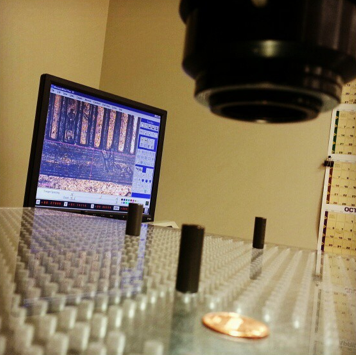 Note: This post was written by Vulcan’s Chad McGraw.
Note: This post was written by Vulcan’s Chad McGraw.
Team members at Vulcan GMS pride themselves on being flexible and adaptive. It is one of the core philosophies that has allowed Vulcan to prosper in today’s competitive market place.
We enjoy the challenges that ‘outside-the-box’ projects present us. However, breadth and depth of technical capability do not solely ensure a successful company. We must also endeavor to be as efficient as possible. To address this concern, Vulcan instituted a lean manufacturing program to increase quality several years ago.
Lean manufacturing seeks to implement a variety of management tools and techniques, both on the shop floor and the staff offices, to improve quality and efficiency. Some familiar examples of these techniques are 6S, Kaizen Events and work center layouts.
Implementing One-Piece Flow
As part of Vulcan’s lean manufacturing initiative, one of the tools that we have employed is called the One-Piece Flow Process. In this structured review, a single part number is targeted for study and process improvement. Everything in that part’s manufacturing process is fair game for review. This can include raw materials, outside supply sources, assembly process, design considerations, part tolerances, etc.
This approach to improvement begins with performing a detailed time study of all of the steps included in the manufacturing process. After we have gathered that data, a multidisciplinary team convenes to evaluate the data and make recommendations on where pertinent improvements can improve efficiency.
The evaluation team includes members from Engineering, Production, Quality, Sales, Estimating, and Purchasing. Each team member has the opportunity to make suggestions based on the perspective of their individual function. Ultimately, the team agrees on where improvements can be made, and then timelines are established to implement those improvements.
After the process improvements are implemented, a followup time study is performed to close the loop and verify efficacy of the changes. A part may experience multiple iterations of this process until the team members agree that efficiencies have been improved as much as practicably possible.
The very last task is to time balance the various steps in the manufacturing process. This is done by grouping various steps into an operation. The more balanced (i.e. uniform) the aggregate times are for each operation, the better process flow there is. In other words, bottleneck operations have been eliminated while at the same time improving individual operation efficiencies. An obvious result is a neatly streamlined and expeditious manufacturing process.
As a result of completing a thorough review and implementation of the One-Piece Flow Process, we can gain some great improvements. Cost, quality, and lead-time are directly and positively impacted. In one example, Vulcan has achieved a 38 percent processing time improvement on one part alone! On another part, we were able to eliminate a production operation entirely, due to minor tooling improvements.
While various parts may have differing improvements, these are excellent examples of possible gains when implementing the One-Piece Flow Process. As part of our continuous improvement regimen, after we complete a One-Piece Flow study, we select another part and begin a new study. Time is money, and these are real savings that we can pass on to the end user.

